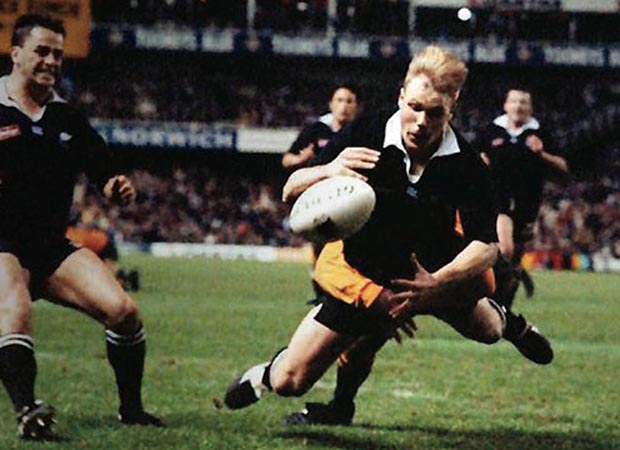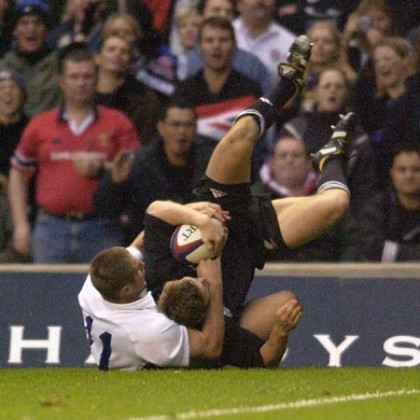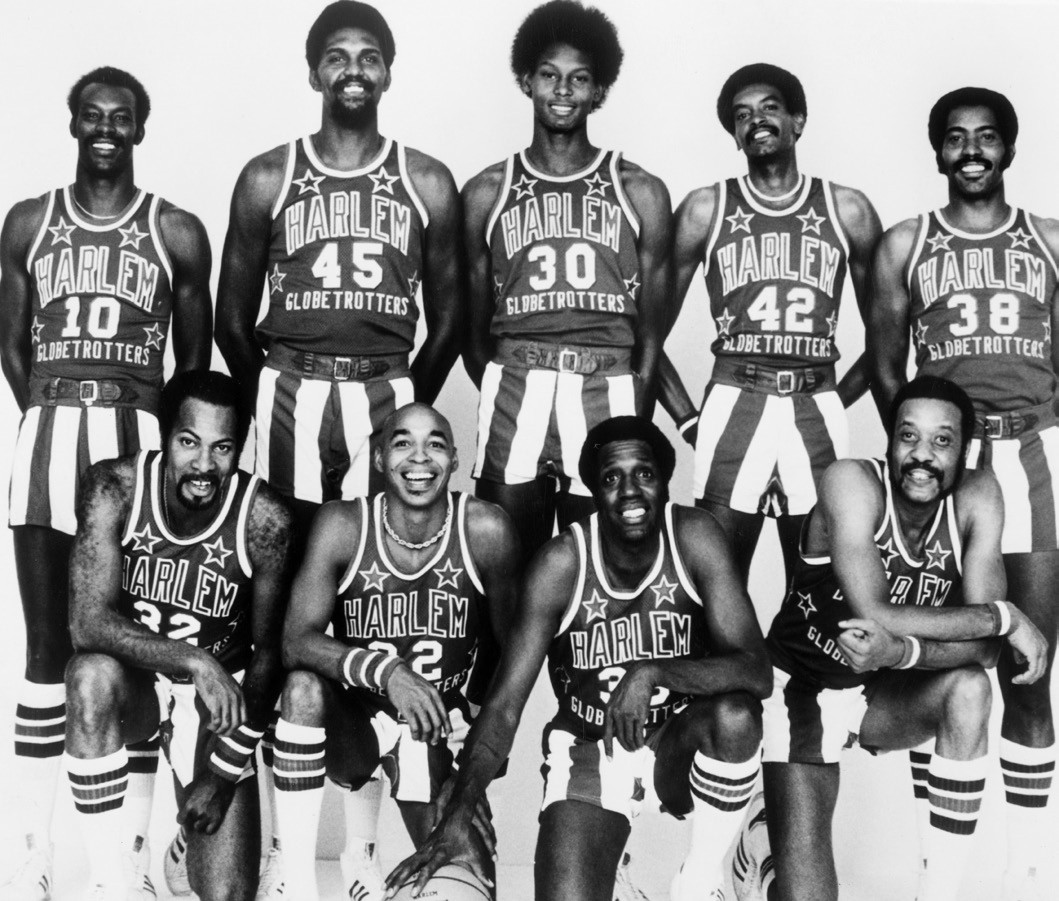
 Today – August 17 – is exactly 20 years since a certain George Gregan made his Bledisloe Cup debut in Sydney and pulled off possibly the most astounding try-saving tackle in Test match history. The genuine try-saving tackle should not be confused with the monster ‘hit’ although just occasionally they are one and the same. A try-saving tackle does exactly what it says on the tin – it is a challenge that prevents a seemingly certain score from the opposition and very often it is the moment a massive game is won and lost.
Today – August 17 – is exactly 20 years since a certain George Gregan made his Bledisloe Cup debut in Sydney and pulled off possibly the most astounding try-saving tackle in Test match history. The genuine try-saving tackle should not be confused with the monster ‘hit’ although just occasionally they are one and the same. A try-saving tackle does exactly what it says on the tin – it is a challenge that prevents a seemingly certain score from the opposition and very often it is the moment a massive game is won and lost.
1. George Gregan – on Jeff Wilson for Australia against New Zealand August 1994.
Wilson was gliding in for one of the tries of the season – inside, outside, dummy, surge of power and swallow dive for the line when he was hit by the Exocet that was the young Gregan. The Aussie scrum-half was canny as well though – there was no way he could stop Wilson getting over the line, his only hope was to hit him so hard in the midriff where Wilson was carrying the ball with his right hand that he spilled it forward. He had pulled such a move off before at the Hong Kong Sevens but this tackle clinched the Bledisloe Cup, Australia winning 20-16.
2. Josh Lewsey – on Jean de Villiers for England against South Africa November 2006.
De Villiers intercepted Charlie Hodgson’s pass 75 yards out and sprinted for the line for what appeared a simple run-in. Only Lewsey gave chase but he bided his time on the angle almost getting past De Villiers so he could get some forward and sideways force into the tackle. He also subtly offered the outside by angling his shoulders infield as if covering or even inviting an inside pass to Akona Ndungane. Lewsey delayed, delayed, delayed and then, with reaching for the line was De Villiers’ only option, hit him like a thunderclap forcing a foot into touch. England won 23-21.
3. Peter Stringer – on Dan Luger for Ireland against England at Lansdowne Road in October 2001.
The flying England wing looked clean through and was seemingly yards ahead of the Ireland scrum-half but somehow the 5ft 7in Stringer, never giving up on the chase, launched himself full length across the ground to just flick Luger’s back foot on the Ireland 22. Luger stumbled and fell to ground. “That tackle won us the game, as simple as that,” said Keith Wood. Ireland won 20-14.
4. JPR Williams – on Jean-Francois Gourdon for Wales against France at the Arms Park in 1976.
The powerful French wing was hurtling towards the line and was about 18 inches short when JPR emerged from nowhere to dismiss the Frenchman from his presence with a no arms tackle into touch. His ‘shoulder charge’ would result in a penalty try and yellow card now, indeed it was nigh on identical to the challenge Liam Williams completed on Cornal Hendricks against the Boks this summer. On that occasion it cost Wales the game. In 1976 Wales won 19-13.
5. John Eales – on Rob Andrew in the 1991 World Cup final.
Right at the death, and trailing 12-6, England broke in midfield and Andrew seemed clear but the youthful Eales showed a remarkable turn of speed for a lock to close the England fly-half down and then bring him to ground with a low tackle around the ankles. As we got to know Eales better we began to appreciate that actually it was pretty routine for an extraordinary all round rugby player who went on to also captain the Aussies to a second World Cup in 1999.
6. Ben Smith – on Manu Tuilagi in the second Test against New Zealand June 2014.
England had been a tad unlucky not to win the first Test and experimenting with Tuilagi on the right wing were 10-3 up a week later when he intercepted on the stroke shortly before half-time and head for the hills 70 yards out. Smith had acres of ground to make up but judged his chase perfectly and decked Tuilagi with a perfectly timed tackle before bouncing up to secure possession as well. Wondrous stuff. NZ won 28-27.
7. Haydn Mainwaring – on Avril Malan, Barbarians v South Africa, Cardiff, February 1961.
Another yellow card and penalty these days but what a tackle. Mainwaring was huge man for a full-back in those days and as Malan escaped down the right he was the last line of defence. Picking his moment perfectly Mainwaring hit Malan shoulder to shoulder and sent him flying. It was fully two minutes before the Springbok could catch his breath. Later in the game he hit Michael Antelem with a similar effort in midfield although the Barbarians line wasn’t under immediate threat. Barbarians won 6-0 .
8. John Kendall Carpenter – on JV Smith for Oxford University v Cambridge University December 1949.
As a No.8 Kendall Carpenter, who eventually found fame as the first chairman of the Rugby World Cup, was always known as the “king of the corner flaggers” and never more so than in the 1949 Varsity match. With Oxford leading 3-0, Cambridge centre Smith sidestepped two defenders with a couple of minutes left and looked certain to score when Kendall Carpenter found another gear and dragged him down and forced him into touch a yard short of the line. Oxford won 3-0.
 9. Ben Cohen – on Ben Blair for England v New Zealand November 2002.
9. Ben Cohen – on Ben Blair for England v New Zealand November 2002.Blair was a hugely promising New Zealand full-back apparently in the Christian Cullen mould but Cohen had already skinned him en route to a cracking try earlier in the game and then, at a crucial stage of the game, got the angle on Blair and hauled him down a yard short of the line when a try had seemed certain. England ran out 31-28 winners, a huge morale booster which heralded their annus mirabilis of 2003. Blair only played one more Test for the All Blacks.
10. Japie Mulder – on Jonah Lomu for South Africa against New Zealand in the 1995 World Cup final.
I’m cheating slightly on this one because strictly speaking it wasn’t a try saving tackle, but if anything it was more important than that. Lomu had been unstoppable throughout the World Cup but only once did big Jonah really threaten that day, down the left flank, when the indomitable Mulder went low and very hard to send the man mountain crashing down. The crowd roared and the Boks took heart. South Africa won 15-12.
*This article was first published in The Rugby Paper on August 17.

1 Comment
You must be logged in to post a comment Login
Leave a Reply
Cancel reply
Leave a Reply
You must be logged in to post a comment.

Latest News
Charlie Elliott: Ben Youngs’ Best Career Moments

























Pingback: ดูซีรี่ย์